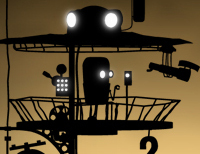The Velluvial Matrix is the commencement speech Atul Gawande gave Stanford’s School of Medicine.
Half a century ago, medicine was neither costly nor effective. Since then, however, science has combatted our ignorance. It has enumerated and identified, according to the international disease-classification system, more than 13,600 diagnoses—13,600 different ways our bodies can fail. And for each one we’ve discovered beneficial remedies—remedies that can reduce suffering, extend lives, and sometimes stop a disease altogether. But those remedies now include more than six thousand drugs and four thousand medical and surgical procedures. Our job in medicine is to make sure that all of this capability is deployed, town by town, in the right way at the right time, without harm or waste of resources, for every person alive. And we’re struggling. There is no industry in the world with 13,600 different service lines to deliver.
It’s worth a read.
***
Also worth the read, but in a totally different way: some folks write one of the most interesting Facebook updates I’ve ever seen.
***
This article from Donna Spencer got me out of a major funk last week.
The more design work I do the more I realise that there is no such thing – there is no right answer to a design problem. […] There are only bad, good and better answers for the current situation. Each of the potential solutions sits within a particular context.




